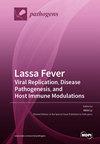Hantavirus Pulmonary Syndrome Outbreak Anticipation by a Rapid Synchronous Increase in Rodent Abundance in the Northwestern Argentina Endemic Region: Towards an Early Warning System for Disease Based on Climate and Rodent Surveillance Data
IF 3.3
3区 医学
Q2 MICROBIOLOGY
引用次数: 0
Abstract
Hantavirus pulmonary syndrome (HPS) is an American emerging disease caused by the rodent-borne virus genus Orthohantavirus (Family: Hantaviridae: Order: Elliovirales Class: Bunyaviricetes). In Argentina, almost half of the HPS infections occur in the northwestern endemic region. In this study, we monitored rodent abundance during 2022 and 2023 in three sites with different sampling methods (removal trapping, live trapping and hunted rodents by domestic cats) to evaluate their relationship with human infections. We found a similar pattern of variation in rodent abundance across time, and particularly a synchronous rise of rodent abundance that anticipated an HPS outbreak in 2023. Our dynamic regression models revealed a positive relationship between HPS cases and rodent abundance with a three-month lag, as well as rainfall with an eight-month lag. Our results provide a framework for the planning and implementation of public health prevention campaigns based on climatology and rodent monitoring. Domestic cats bringing rodents into houses can be an overlooked risk factor, particularly if viral shedding of infected rodents is magnified by stress. HPS is a disease of public health concern due to its high mortality rate, the lack of a specific therapeutic treatment and no vaccine. Thus, prevention of infections is of the utmost importance.通过阿根廷西北部流行地区啮齿动物数量的快速同步增长预测汉坦病毒肺综合征的爆发:基于气候和啮齿动物监测数据建立疾病预警系统
汉坦病毒肺综合征(HPS)是由啮齿类动物传播的正汉坦病毒属(科:汉坦病毒科:目:Elliovirales 类:Bunyaviricetes)引起的一种美国新兴疾病。在阿根廷,几乎一半的 HPS 感染发生在西北部流行地区。在这项研究中,我们在 2022 年和 2023 年期间在三个地点采用不同的取样方法(移除诱捕、活体诱捕和家猫猎杀啮齿动物)监测啮齿动物的数量,以评估它们与人类感染的关系。我们发现,啮齿动物数量在不同时期的变化模式相似,尤其是啮齿动物数量的同步上升预示着 2023 年将爆发 HPS。我们的动态回归模型显示,高致病性腮腺炎病例与啮齿动物数量之间存在三个月的正相关关系,与降雨量之间也存在八个月的正相关关系。我们的研究结果为规划和实施基于气候学和鼠类监测的公共卫生预防活动提供了一个框架。家猫将啮齿动物带入室内可能是一个被忽视的风险因素,尤其是当受感染啮齿动物的病毒脱落因压力而放大时。高致病性腮腺炎死亡率高,没有特效治疗方法,也没有疫苗,因此是一种备受关注的公共卫生疾病。因此,预防感染至关重要。
本文章由计算机程序翻译,如有差异,请以英文原文为准。
求助全文
约1分钟内获得全文
求助全文
来源期刊

Pathogens
Medicine-Immunology and Allergy
CiteScore
6.40
自引率
8.10%
发文量
1285
审稿时长
17.75 days
期刊介绍:
Pathogens (ISSN 2076-0817) publishes reviews, regular research papers and short notes on all aspects of pathogens and pathogen-host interactions. There is no restriction on the length of the papers. Our aim is to encourage scientists to publish their experimental and theoretical research in as much detail as possible. Full experimental and/or methodical details must be provided for research articles.
文献相关原料
| 公司名称 | 产品信息 | 采购帮参考价格 |
|---|
 求助内容:
求助内容: 应助结果提醒方式:
应助结果提醒方式:


